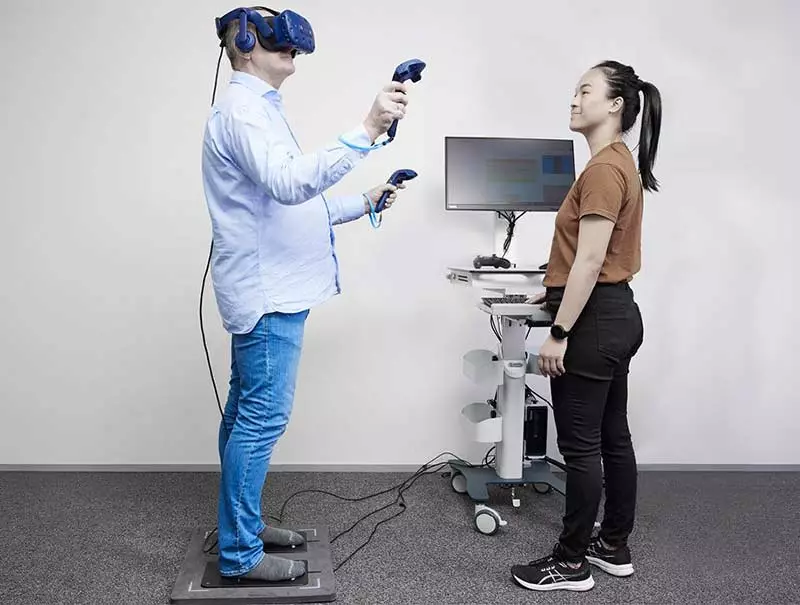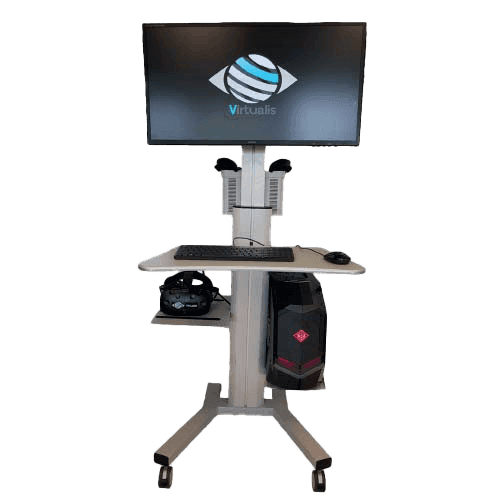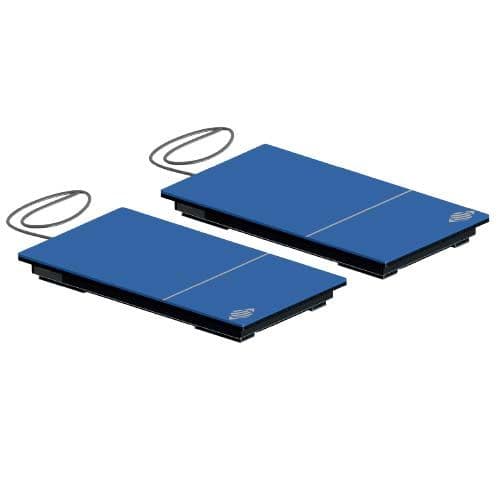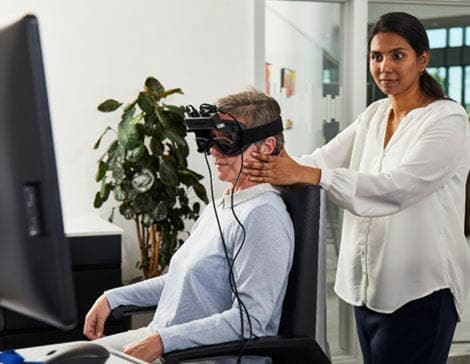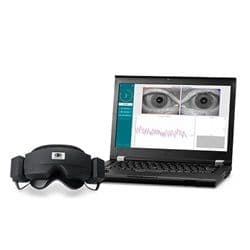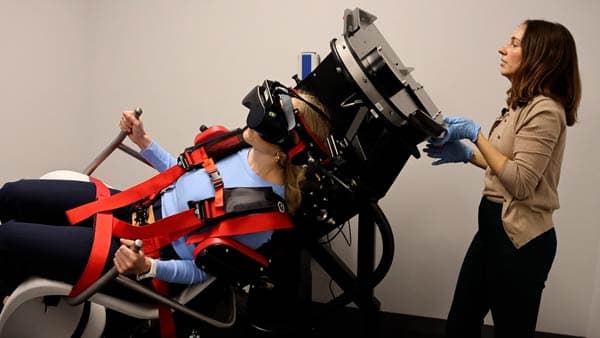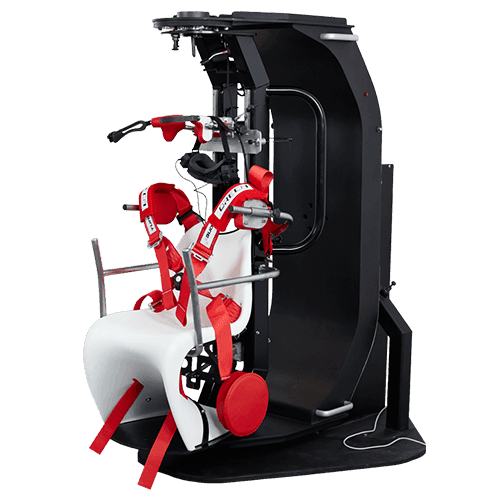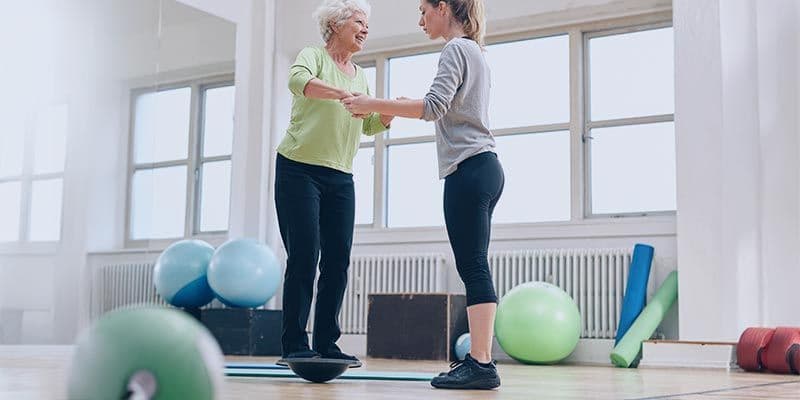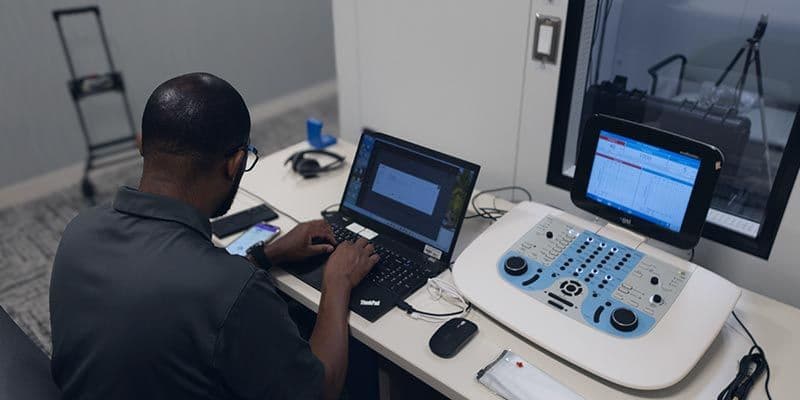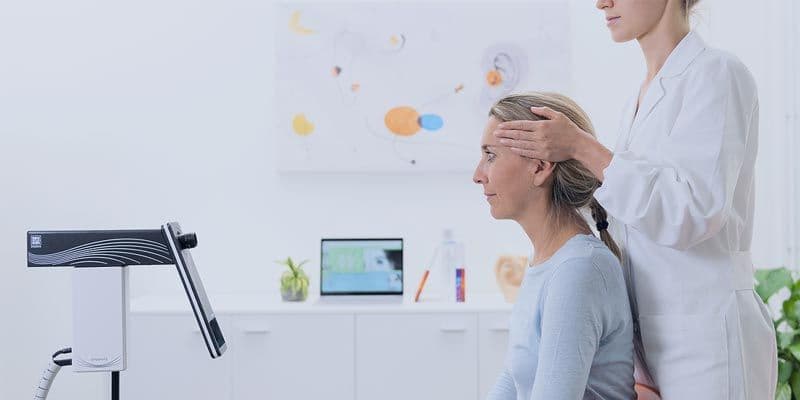Balance Rehabilitation: The Latest Innovations
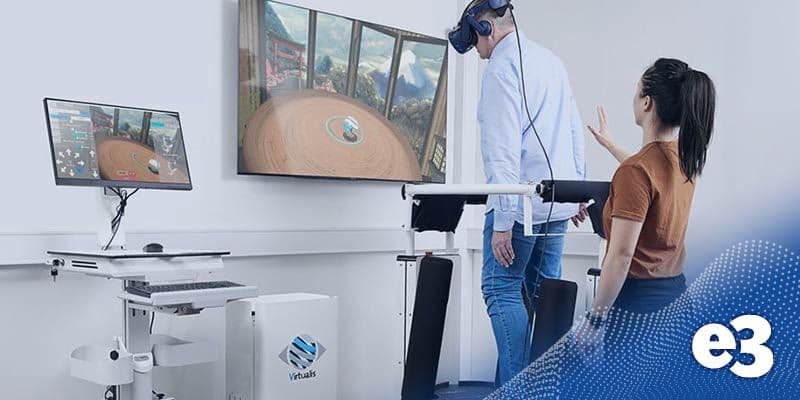
Balance is a fundamental component of human movement and a critical aspect of overall health and well-being. For physical therapists, understanding balance rehab is essential for helping patients regain independence and improve their quality of life.
This blog will explore the latest innovations from Interacoustics for effective balance rehabilitation, including diagnosis, assessment, and training.
What is Balance Rehabilitation?
Balance rehabilitation is a specialized area of physical therapy aimed at assessing, diagnosing, and treating individuals who experience difficulties with balance and stability. This type of rehabilitation focuses on improving a patient’s ability to perform daily activities safely and independently, thereby enhancing their overall quality of life.
Balance rehab uses various methods such as strength training, balance exercises, and walking practice. Innovative technology like virtual reality and computerized dynamic posturography is aiding data-driven rehabilitation, and keeping patients engaged and motivated.
Balance rehabilitation addresses the reasons for balance problems like neurological issues or aging. It helps prevent falls, improve independence, and make patients feel more confident in their daily activities.
Common Causes of Balance Impairments
Balance impairments can arise from various conditions, including:
Neurological Disorders: Stroke, Parkinson’s disease, multiple sclerosis, and traumatic brain injury.
Musculoskeletal Issues: Arthritis, joint replacements, and muscular weakness.
Vestibular Disorders: Benign paroxysmal positional vertigo (BPPV), vestibular neuritis, and Meniere’s disease.
Age-Related Changes: Decreased proprioception, muscle strength, and reaction time in older adults.
Virtual Reality-Based Rehabilitation
Virtual reality (VR) is revolutionizing balance rehab by offering an innovative and engaging approach to delivering personalized training. Virtualis, a leading VR-based rehabilitation system, empowers clinicians to tailor training programs objectively to address each patient’s specific daily living challenges. With Virtualis, clinicians can promptly receive feedback and adjust training sessions as needed, ensuring efficient use of clinic time, and optimizing patient outcomes.
In Virtualis VR, patients immerse themselves in simulated real-life environments mirroring their daily activities, fostering relatability and motivation in the rehabilitation process. Recent research indicates that VR in rehabilitation significantly boosts patient motivation by 73%, with an impressive 98.4% completion rate for a 4–6-week training program using VR [1].
Furthermore, Virtualis enables seamless sharing of data among modules and sessions, enhancing clinician efficiency and the overall rehabilitation process. Research also demonstrates that patients undergoing physical therapy within 3 months of dizziness onset experience 86% fewer falls over the subsequent 9 months [2].
These findings underscore Virtualis VR’s potential to revolutionize balance rehabilitation, making it more personalized, motivating, and efficient.
Balance Assessment using Virtual Reality
Training with VR offers a fully immersive experience by eliminating visual references in the peripheral view, deeply engaging patients in their rehabilitation process. Virtualis provides simulated real-life training modules that promote adaptation, substitution, and habituation, thereby enhancing the effectiveness of balance rehabilitation.
When integrated with the MotionVR dynamic platform, which includes Computerized Dynamic Posturography (CDP), patients undergo a comprehensive functional balance assessment. This platform can move in all directions to simulate real-life surfaces, engaging the entire balance system, including the otoliths, for a comprehensive evaluation and training experience.
Alternatively, the StaticVR platform offers static posturography for basic functional balance assessment. It features portable platforms that provide objective balance control data, allowing for tailored and precise balance training, whether in the clinic or on the go. This versatility makes VR a powerful tool in balance rehabilitation.
Training the Balance System using Virtual Reality
Training to enhance a patient’s function in daily activities is a crucial component of Interacoustics’ comprehensive approach. Balance VR and PhysioVR platforms offer extensive, personalized balance training tailored to each patient’s unique needs.

